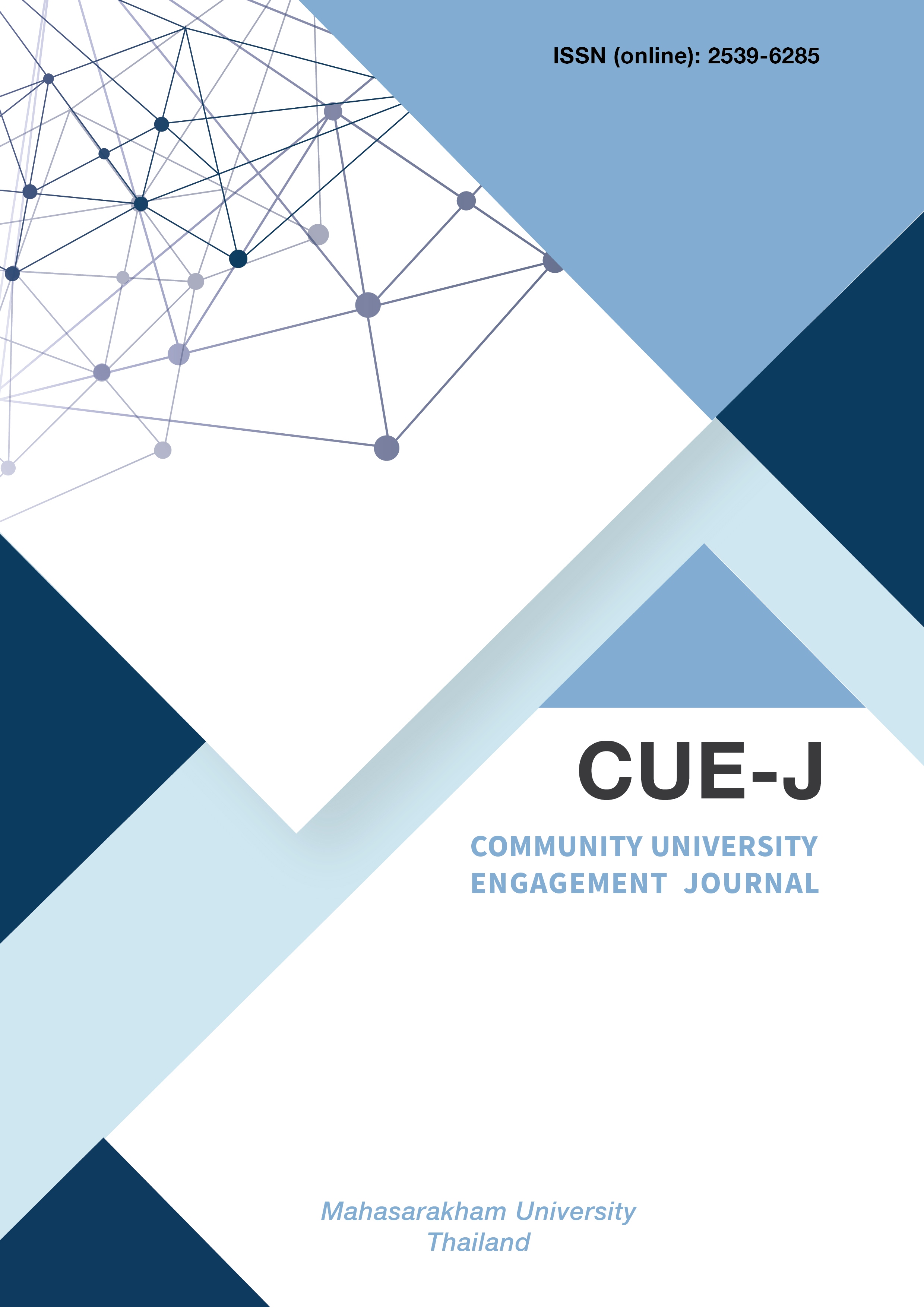Creation of participatory solid waste and hazardous waste management mechanisms by integrating social and cultural costs House-Wat-School (Bowon) at Nong Saeng Subdistrict Administrative Organization Nong Saeng Subdistrict, Wapi Pathum District, Maha Sarakham Province
Main Article Content
Abstract
Nong Saeng Subdistrict Administrative Organization, Wapi Pathum District, Maha Sarakham Province. It is another area of the country that has problems with solid waste management. and guidelines for managing solid waste problems at the end of the subdistrict administrative organization at present that have not been able to solve the problem. This study aims to study methods for waste management and hazardous waste disposal at the source by allowing the public to see how leaders from three sectors, namely home, temple, and school (Bowon), drive and contribute to solving problems at the source. In this study, a Deming cycle process was used, consisting of Plan (P), Do (D), Check (C), and Act (A). The researcher went to the community area to study information about the area’s solid and hazardous waste management. And share the information that has been understood with people in the community, including community leaders, religious leaders, and schools. To discuss and determine guidelines for the management of solid waste and hazardous waste that are suitable for the community based on the community’s own referendum. The results of the discussion resulted in a solution to the solid waste problem at the source: 1) A guideline for household waste management with the 3Rs and hazardous waste management was established; 2) a community recycling fund operating committee was formed. One month after the referendum, the researcher surveyed community operations and found that 80% of households separated waste according to the 3Rs principles, namely reduce, reuse, and recycle. There is also a separation of hazardous waste for the SAO to collect and dispose of. A group was formed to establish a waste fund. and set up a recycling market that would travel to various villages. In addition, it was found that people earn from the sale of recycled waste 100-500 baht per month. As for the community schools, it was found that waste and hazardous waste were separated scientifi cally. It was also found that students and teachers brought their own water glasses instead of getting plastic bags from the store. The researcher also found that during the beginning of the operation, in addition to relying on propulsion from the bowon mechanism, it also requires external propulsion such as university resources that will enhance both knowledge and insight and budget from government agencies or private sectors. To drive the operation to be fast and create a strong group of communities.
Article Details

This work is licensed under a Creative Commons Attribution-NonCommercial-NoDerivatives 4.0 International License.
All authors need to complete copyright transfer to Community University Engagement Journal prior to publication. For more details click this link: copyright & license
References
Burikul, T., Prasertchareonsuk, R., Na Nakorn, T. & Janya, S. (2014). Public participation in environmental impact assessment manual. Environmental Governance Network Thailand.
Environmental Quality Surveillance Division. (2020). Environmental quality situation report (Kalasin, Khon Kaen, Maha Sarakham, Roi Et, Nong Bua Lam Phu) regional environment offi ce 10. Ministry of Natural Resources and Environment.
Fine, B. (2001). Social capital versus social theory: political economy and social science at the turn of the millenium. Routledge.
Jeena, Y and Borwornsantisuk, R. (2018). Participatory models of houses, temples, and schools in promoting 12 virtues and values. Chiang Mai Province Journal of Peace Studies, MCU, 6 Special Issue, 48-60.
Komanothai, S. (2017). Cooperation between homes, temples, and schools in developing Buddhist schools [Faculty of Political Science, Thammasat University].
Putkham, A. (2020). Service academic program will make organizing the garbage and hazardous waste fi les a participatory community effort with cost sauce as a resource. House-Temple-School (Bowon).
Srasom, Y. (2017). Participation in “house, temple, and school management” of the temple school in Bangkok, Doctor of philosophy thesis education administration. Department of Educational Administration graduate school Silpakorn University.
UNEP. (2015). Global waste management outlook waste. https://www.unep.org/resources/ report/global-waste-management-outlook.
United Nation. (2009). Popular participation as a strategy for promoting community level action and nation. United Nation. Yamane,
Taro. (1967). Statistics: An introductory analysis. Harper and Row.

